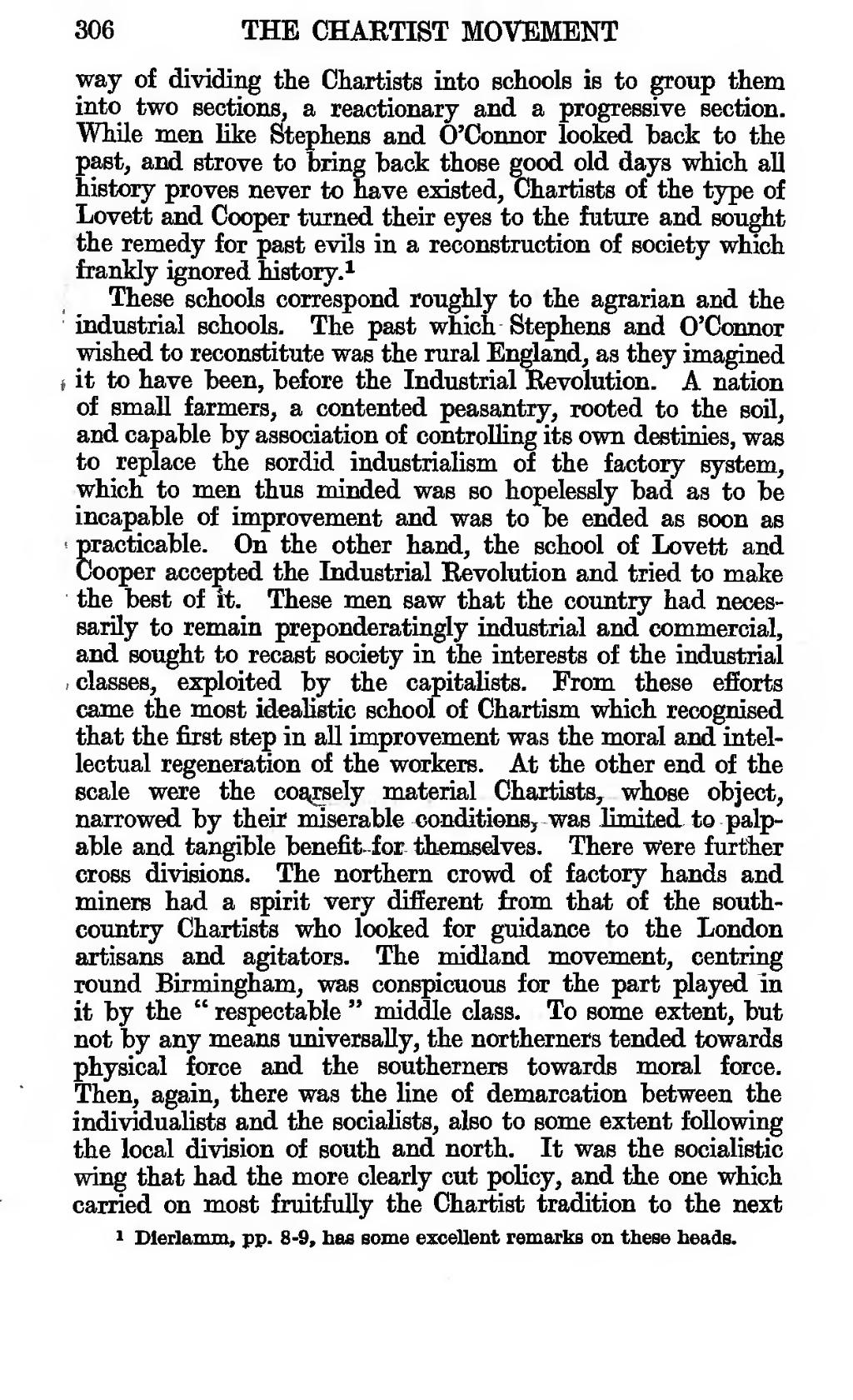way of dividing the Chartists into schools is to group them into two sections, a reactionary and a progressive section. While men like Stephens and O'Connor looked back to the past, and strove to bring back those good old days which all history proves never to have existed, Chartists of the type of Lovett and Cooper turned their eyes to the future and sought the remedy for past evils in a reconstruction of society which frankly ignored history.[1]
These schools correspond roughly to the agrarian and the industrial schools. The past which Stephens and O'Connor wished to reconstitute was the rural England, as they imagined it to have been, before the Industrial Revolution. A nation of small farmers, a contented peasantry, rooted to the soil, and capable by association of controlling its own destinies, was to replace the sordid industrialism of the factory system, which to men thus minded was so hopelessly bad as to be incapable of improvement and was to be ended as soon as practicable. On the other hand, the school of Lovett and Cooper accepted the Industrial Revolution and tried to make the best of it. These men saw that the country had necessarily to remain preponderatingly industrial and commercial, and sought to recast society in the interests of the industrial classes, exploited by the capitalists. From these efforts came the most idealistic school of Chartism which recognised that the first step in all improvement was the moral and intellectual regeneration of the workers. At the other end of the scale were the coarsely material Chartists, whose object, narrowed by their miserable conditions, was limited to palpable and tangible benefit for themselves. There were further cross divisions. The northern crowd of factory hands and miners had a spirit very different from that of the south-country Chartists who looked for guidance to the London artisans and agitators. The midland movement, centring round Birmingham, was conspicuous for the part played in it by the "respectable" middle class. To some extent, but not by any means universally, the northerners tended towards physical force and the southerners towards moral force. Then, again, there was the line of demarcation between the individualists and the socialists, also to some extent following the local division of south and north. It was the socialistic wing that had the more clearly cut policy, and the one which carried on most fruitfully the Chartist tradition to the next
- ↑ Dierlamm, pp. 8-9, has some excellent remarks on these heads.
